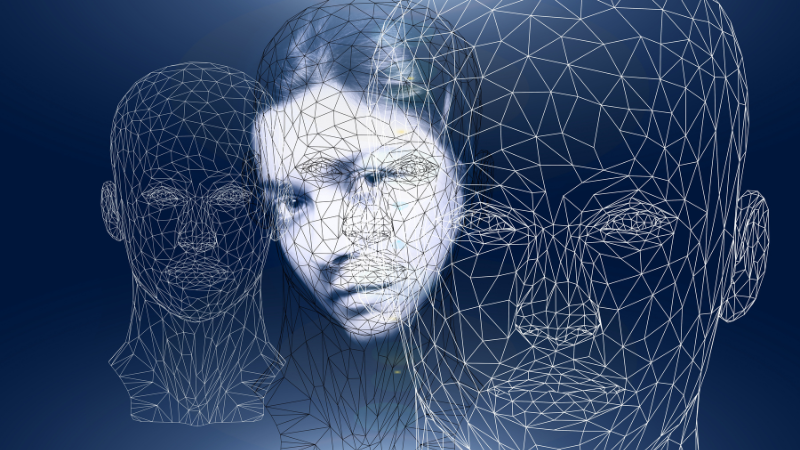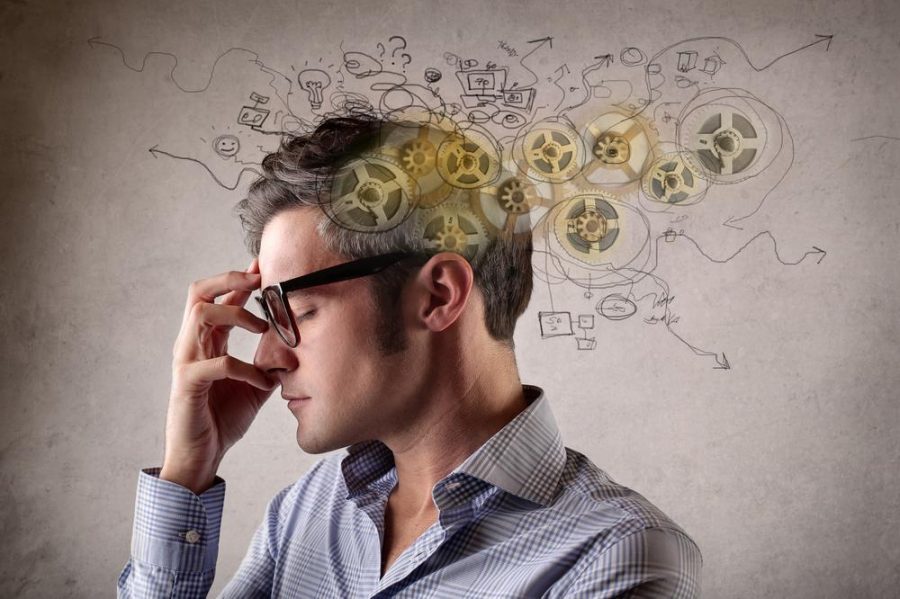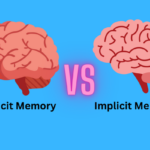What Is Iconic Memory? Unveiling the Enigmatic Snapshot of Perception
What Is Iconic Memory? Iconic memory is a fleeting visual sensory memory that lasts milliseconds. It stores a large amount of information from the environment but quickly fades. This memory type helps bridge the gap between eye movements and conscious perception, aiding in the perception of a stable visual world.

Introduction
Hey there, curious minds! 🌟 Have you ever wondered how our brain processes the world around us in a blink of an eye? Well, buckle up, because we’re about to dive into the fascinating realm of memory and uncover the secrets of a lesser-known memory type: iconic memory. As a memory enthusiast and a mental health expert, I’m here to guide you through the intricacies of this incredible phenomenon.
Understanding Sensory Memory
Before we unravel iconic memory, let’s lay the groundwork by talking about sensory memory. Think of it as the gateway to your perception—it’s the system that captures the initial sensory information from the environment before it’s processed further. There are different types of sensory memory, with iconic memory and echoic memory being the primary players.
Iconic Memory: A Fleeting Glimpse
Iconic memory, my friends, is like a snapshot of the visual world. Imagine you’re gazing at a breathtaking sunset—it’s not just a continuous stream of colors; your brain takes a quick snapshot of that beauty, preserving it for further processing. This snapshot, however, is as fleeting as a butterfly’s kiss, lasting for just a fraction of a second. It’s a lot like taking a quick photo with your eyes, and then the brain decides whether to toss it or keep it.
Iconic Memory Psychology Definition
Iconic memory, a concept within the realm of psychology, refers to a type of sensory memory specifically associated with visual information processing. It’s often described as a fleeting but highly efficient “snapshot” of the visual world, allowing the brain to capture a momentary and detailed image of what is seen. This mental snapshot remains in the conscious experience for just a fraction of a second before fading away.
Iconic memory plays a crucial role in our ability to perceive and recognize objects, scenes, and people in our environment. While its duration is incredibly brief, its impact on our cognitive processes, from perception to memory consolidation, is significant. This dynamic memory system underscores the remarkable capacity of the brain to instantaneously process and interpret the vast amount of visual stimuli encountered in our daily lives.
Unleash Your Potential: Try Himalayan “Biological Gold” for improved memory and mental clarity – banish brain fog now!
Iconic Memory Example
Let’s delve into an iconic memory example to truly grasp how this phenomenon works. Imagine you’re strolling through a vibrant farmer’s market on a sunny morning:
- Snapshot of Colors: As you walk past the stalls, your iconic memory captures the rich hues of fresh produce—the deep red of strawberries, the vibrant green of spinach, and the golden yellow of ripe bananas. It’s like your brain is taking quick snapshots of a colorful painting.
- Textures and Details: While passing by a handmade crafts booth, your iconic memory preserves the intricate details—a handwoven scarf’s soft texture, the intricate patterns of ceramic mugs, and the roughness of wooden carvings. These snapshots allow you to mentally “touch” the textures even after you’ve moved on.
- Faces in the Crowd: Amidst the hustle and bustle, you spot a friend from afar. Your iconic memory quickly captures their familiar face—the curve of their smile, the twinkle in their eyes, and even the wind rustling through their hair. It’s as if your brain is taking candid snapshots, freeze-framing the moment.
- Spontaneous Interactions: As you stop at a bakery stall to sample fresh pastries, a friendly vendor strikes up a conversation. Your iconic memory captures not only the words exchanged but also the vendor’s animated gestures and warm expressions. These snapshots add depth to the memory of the interaction.
- Flavors and Aromas: You decide to try a piece of exotic fruit you’ve never tasted before. As the sweetness bursts on your tongue, your iconic memory preserves the sensory experience—the tangy aroma, the juicy texture, and the momentary delight that dances across your taste buds.
- Overall Atmosphere: Lastly, your iconic memory captures the overall ambiance—the hum of conversations, the scent of freshly baked goods wafting through the air, and the warmth of the sun on your skin. It’s like creating a mental collage that encapsulates the essence of the entire experience.
This example illustrates how iconic memory works like a series of snapshots, capturing various sensory aspects of a single moment. These snapshots are stored temporarily, giving your brain a chance to decide what’s worth holding onto for further processing and memory consolidation. It’s like curating a mental photo album of life’s moments, each snapshot contributing to the rich tapestry of your memories.
What Does Iconic Memory Store?
Iconic memory serves as a lightning-fast visual storage system that captures a wide range of visual information from our surroundings. Think of it as a mental snapshot album, preserving the immediate visual impressions we encounter. It stores everything from colors and shapes to textures and patterns. When you gaze at a bustling street, it’s iconic memory that quickly captures the vivid hues of clothing, the intricate details of architecture, and even the motion of people moving about.
![]()
From the delicate petals of a flower to the intricate strokes of an artist’s masterpiece, iconic memory is responsible for capturing the visual essence of the world around us. It’s a transient repository that allows our brains to process, recognize, and make sense of these visual stimuli within an incredibly short time frame, even before we consciously register them.
This storage capacity contributes to our perception of a coherent and continuous visual reality, providing the building blocks for higher-level cognitive processes.
How Long Does Iconic Memory Last
Iconic memory, that lightning-fast snapshot of the visual world, is astonishingly short-lived. Imagine blinking—it’s a fraction of that moment. Research suggests that iconic memory tends to last for only about 250 to 500 milliseconds, which is just a quarter to half a second! It’s as if your brain takes a quick peek at the world, captures an image, and then lets it go almost as swiftly as it arrived.
This fleeting duration might seem like a limitation, but it serves a crucial purpose in allowing our brain to quickly process a vast amount of visual information. Just like a camera with a lightning-quick shutter speed, iconic memory captures the essence of a scene in the blink of an eye, setting the stage for further cognitive processing and interpretation.
George Sperling’s Insightful Experiments
Now, let’s journey back to the 1960s when psychologist George Sperling conducted some eye-opening experiments. Picture this: Sperling showed participants a grid of letters for just a split second and then asked them to recall as many letters as possible. What he found was intriguing—the participants could recall a substantial portion of the letters, even those that were not in their line of sight. This hinted at the existence of iconic memory, a temporary storehouse for visual information.
The Neurological Underpinnings
Alright, let’s put on our brain explorer hats and delve into the neurological magic behind iconic memory. Our visual pathway—the highway for visual information—plays a crucial role. When light hits your retinas, it travels through a series of neural relay stations until it reaches the visual cortex, where iconic memory’s dance begins.
The Visual Cortex: Where the Magic Happens
Think of the visual cortex as the brain’s backstage for visual processing. It takes that snapshot captured by iconic memory and starts turning it into a masterpiece. It’s like having a team of artists who take your quick doodle and transform it into a detailed painting, adding colors, shapes, and depth.
Integration with Other Senses
Remember, our brain isn’t just a solo artist—it loves to collaborate! Iconic memory dances with other sensory processes like attention, perception, and even emotions. Imagine a scenario where you spot a loved one in a crowd. That iconic memory snapshot suddenly gets tagged with emotions—joy, relief, excitement—which gives it a special place in your mental gallery.
Iconic Memory and Its Impact
Now that we’ve peeled back the curtain on iconic memory’s backstage, let’s explore how it impacts our daily lives.
Perception and Object Recognition
Ever walked into a room and instantly recognized familiar objects? That’s your iconic memory at play. It helps you make sense of the world by quickly categorizing and identifying objects, even with minimal details.
Attention and Focus: The Balancing Act
Picture this: you’re at a bustling café, and your friend’s voice stands out amid the noise. Iconic memory and attention collaborate here. Iconic memory gives you a glimpse, and attention decides whether that glimpse deserves more of your mental spotlight.
Memory Consolidation: From Fleeting to Lasting
While iconic memory might be fleeting, it can influence the path to long-term memory. It’s like the first draft of a story—your brain decides whether it’s worth revisiting and transforming into a chapter in the book of your memory.
Implications for Mental Health
Note: This section is close to my heart, as I’ve seen the impact firsthand.
Think about cognitive disorders like Alzheimer’s disease. As these disorders progress, iconic memory may become impaired, leading to challenges in recognizing familiar faces, objects, or places. Understanding iconic memory’s role could pave the way for interventions and therapies to support affected individuals.
Factors Influencing Iconic Memory
Now, let’s sprinkle a dash of complexity into the mix. Iconic memory’s performance isn’t fixed; it can be influenced by various factors.
![]()
Age and Developmental Changes
Just like our bodies change with age, so does our memory. Iconic memory’s snapshot might be a tad slower in older adults, like that moment when your smartphone camera takes a beat before capturing the perfect shot.
Attention: The Captain of the Ship
Attention is the puppet master pulling the strings of memory. The more attentive you are, the better your iconic memory performs. It’s like catching a movie scene—the more engrossed you are, the more you remember.
Emotional Significance: Coloring Memories
Emotions are like a paintbrush that adds vibrant hues to your memories. Ever noticed how you remember the tiniest details of a surprise party? Iconic memory is there, capturing not only the visuals but also the feelings.
Enhancing Iconic Memory
Hey, we’re all about self-improvement, right? So, here are some techniques to flex those iconic memory muscles.
Mindfulness and Awareness
Practice being present and fully engaged in your surroundings. It’s like giving your brain permission to take more vivid snapshots. Try this: take a moment to observe your surroundings right now. What colors, shapes, and details do you notice?
Mnemonic Strategies: The Memory Hacks
Mnemonics are like cheat codes for memory. Create vivid mental images—turn your grocery list into a quirky story. This tricks your iconic memory into holding onto these mental snapshots a bit longer.
Utilizing Iconic Memory in Daily Life
Note: A personal anecdote here!
As a memory enthusiast, I’ve turned iconic memory into a secret weapon. When I’m taking notes during a lecture, I quickly visualize the speaker’s expressions and gestures. Later, when I review my notes, those iconic memory snapshots help me recall the context and nuances of the discussion.
Iconic Memory in the Digital Age
In our digital age, screens bombard us with visual stimuli. How does this affect iconic memory?
Impact of Screens and Digital Devices
Scrolling through social media, binge-watching shows—our screens are like a digital kaleidoscope of images. They expose our iconic memory to an ever-changing parade of snapshots.
Challenges and Opportunities
While screens can overload our iconic memory, they also present opportunities. Think of educational apps that engage your iconic memory, turning learning into a visual adventure.
Future Directions in Iconic Memory Research
As we venture toward the horizon of knowledge, what lies ahead for iconic memory?
Advances in Neuroimaging
Cutting-edge technology allows us to peek into the brain’s inner workings. Neuroimaging could unveil iconic memory’s backstage even further, helping us understand how it collaborates with other brain regions.
Cross-Disciplinary Collaboration: Expanding Horizons
Experts from various fields—psychology, neuroscience, technology—are coming together to unlock iconic memory’s mysteries. This fusion of ideas could lead to breakthroughs we haven’t even imagined.
Potential Applications: From Education to Medicine
Iconic memory isn’t just a brainy curiosity—it has real-world applications. In education, educators could harness its power to make learning more engaging and memorable. Imagine history lessons that transform into immersive journeys, where iconic memory snapshots bring historical figures to life.
In the realm of medicine, understanding iconic memory’s role in cognitive disorders could pave the way for innovative interventions. Virtual reality therapies that stimulate iconic memory could help individuals with memory impairments reconnect with their surroundings and loved ones.
Conclusion
And there you have it, intrepid explorers of memory! Iconic memory, that fleeting but captivating snapshot of perception, has journeyed from the realms of psychology to the forefront of our understanding of the mind. It’s a reminder that our brain is a wondrous canvas, capturing the beauty of the world in the blink of an eye.
So, the next time you catch a stunning sunset or glimpse a loved one’s smile, remember that your brain’s iconic memory is working its magic behind the scenes. Take a moment to appreciate the intricate dance of neurons and snapshots that shape your perception and memories.
As we continue to unveil the enigmatic world of memory, remember that your brain is an extraordinary storyteller, weaving together the threads of iconic memory and more to create the tapestry of your life’s experiences. Embrace the beauty of the snapshots, and let them paint the vivid picture of who you are.
Keep exploring, keep learning, and let the world of memory be your endless adventure.
Frequently Asked Questions
Q1: What exactly is iconic memory, and how does it differ from other types of memory?
Iconic memory is a type of sensory memory that pertains specifically to visual information. It’s like a quick snapshot your brain takes of the visual world around you, capturing details like shapes, colors, and patterns. This snapshot lasts for an incredibly short duration, typically around 250 to 500 milliseconds. Unlike other types of memory, such as working memory or long-term memory, iconic memory is focused on the immediate and transient perception of visual stimuli.
Q2: Can you provide an everyday example of iconic memory in action?
Certainly! Have you ever glanced at a bright and colorful advertisement while driving and managed to recall its colors and basic layout even after you’ve passed by? That’s iconic memory in action. It’s the reason why you can get a sense of what you’ve just seen, even though the image is no longer in your direct line of sight.
Q3: How does iconic memory contribute to our overall memory system and cognitive processes?
Iconic memory plays a crucial role in the initial stages of information processing. It helps us make sense of the world by quickly capturing visual details and allowing our brain to start the process of recognition and interpretation. Think of iconic memory as the brief glimpse that sets the stage for further cognitive processes, such as identifying objects, faces, and scenes. It provides a foundation for our attention and helps guide where our focus should be directed.
Q4: Can we improve or train our iconic memory? Are there any practical applications for this ability?
While we can’t significantly extend the duration of iconic memory, we can enhance its effectiveness through various techniques. Mindfulness and active awareness of our surroundings can help us make the most of this fleeting memory capacity. Additionally, mnemonic strategies that involve creating vivid mental images can aid in prolonging the retention of iconic memory-like snapshots. In terms of practical applications, understanding iconic memory can lead to improved teaching methods that utilize its strengths in education, as well as potential therapies for cognitive disorders by stimulating the brain’s visual pathways.
For more information on Types of Memory, check out these posts:



